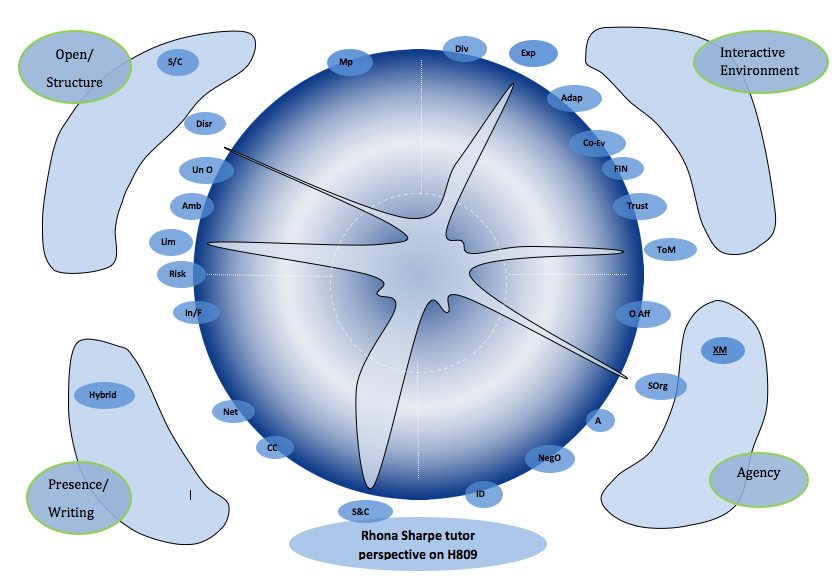Yes Scott - we are not saying that emergent learring is good and prescriptive learning is bad or vice versa - more, we are interested in the balance between the two, which you have nicely described in terms of push and pull.
Sometimes simply drawing the footprint helps to make this balance - or lack of balance - explicit and then you can act on it. It is not uncommon for people to be surprised by the result of drawing a footprint. So here are two examples:
- The Masters Degree in e-Business and Innovation course (which we wrote about in this paper - http://www.irrodl.org/index.php/irrodl/article/view/1267/2307). The leader of this course realised that there were aspects of the course which were over-challenging - near the edge of chaos - and that this was inhibiting learning - so he pulled aspects of the course back towards the prescriptive zone, where learners would feel safer.
- In a workshop we ran one of the participants drew two footprints - one of her Masters course in Mexico and the other of her PhD course in the UK. She superimposed the PhD footprint over the Masters footprint and it became really explicit that her PhD was significantly more prescriptive than her Masters, which she had experienced as more open. This was really interesting and unexpected for everyone. Unfortunately we do not ahve a copy of the footprint.
Finally - we have written in the past about the importance of constraints, i.e. we do not want our learners to fall off the edge of chaos - but what is challenging for one learner is not for another learner -so the application of constraints is not straight forward. The bottom line is that constraints determine what should NOT happen, rather than what should happen - if that makes sense!
Can you think of examples where the balance between prescriptive and emergent learning has or hasn't worked?
Thanks Scott
